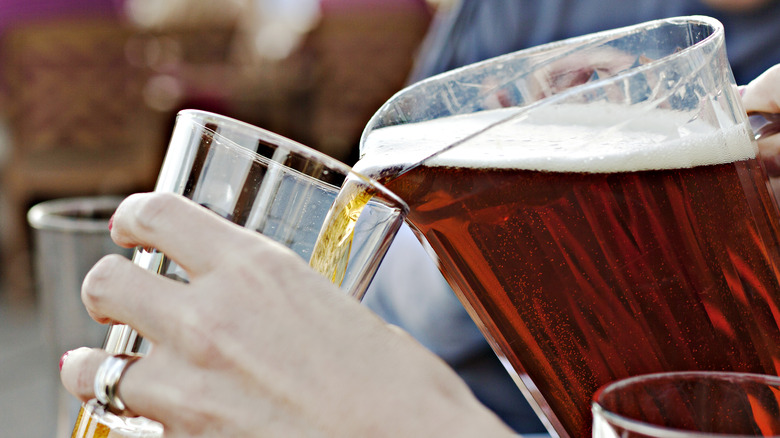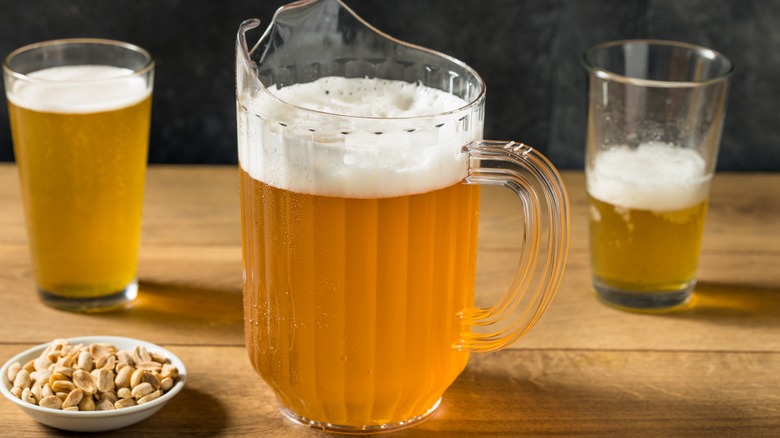Here's How Many Drinks Are In A Pitcher Of Beer
Whether you're hanging with friends or buying a round for your fellow bargoers, a pitcher of beer is an excellent way to get the good times going. They make it easy to top off your drink without flagging down a bartender or waitstaff and can sometimes provide noteworthy savings compared to buying individual beers. However, buying pitchers poses one problem: figuring out precisely how many drinks are in each. Unfortunately, there's no single answer to this common question.
Ultimately, it depends on what size pitcher you're using and how much volume you consider a drink. Pitchers commonly come in three sizes: 32, 48, and 60 fluid ounces. However, a typical bar pint glass has a total volume of 16 ounces, which would fill the glass to the brim. When it comes to canned and bottled beers, most contain 12 ounces. Using simple math, a 32-ounce pitcher would contain about two pint glasses or around 2.67 cans or bottles of beer. A 48-ounce pitcher would hold roughly three pint glasses or four cans or bottles, and a 60-ouncer contains 3.75 pint glasses or five cans or bottles.
Depending on the pitcher size, you'll have to calibrate the number ordered to the amount of drinks you anticipate having. Large groups (or those who are feeling particularly thirsty) will have to order multiples, as the next step up at many bars is the keg. In case you're wondering how many beers are actually in a half-barrel keg, it's typically just over 165 12-ounce servings or 124 full pint glasses worth. That's quite a few pitchers!
Other considerations for pitcher-to-drink sizing
Keep in mind that you may get more poured drinks than this out of your pitcher. A typical poured pint doesn't usually include a full 16 ounces due to the need to transport the glass without spilling. This, alongside the space taken up by foam, means the true volume of beer is likely a few ounces less.
This second part is particularly critical. While many don't realize it, you've probably been pouring beer wrong this whole time by slowly pouring it down the side of an angled glass to eliminate foam. In reality, it's good to have a bit at the top of your glass. This can be achieved by a more vigorous pour that agitates the beer. This is a sign the carbon dioxide has been adequately released during the pour — rather than in your stomach. The volume of this foam will result in less liquid in your glass and, as a result, slightly more drinks in total.
Of course, pitchers are almost universally filled with draft beer, which may not be your ideal choice for a variety of reasons. Some might object to the often more limited selection, while others may want to think twice before ordering a draft beer over concerns about dirty draft lines polluting their beverage with residue and bacteria. Nevertheless, remember these handy ratios to simplify your ordering process the next time you've got the drinks flowing.

